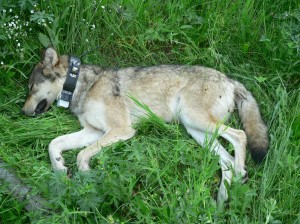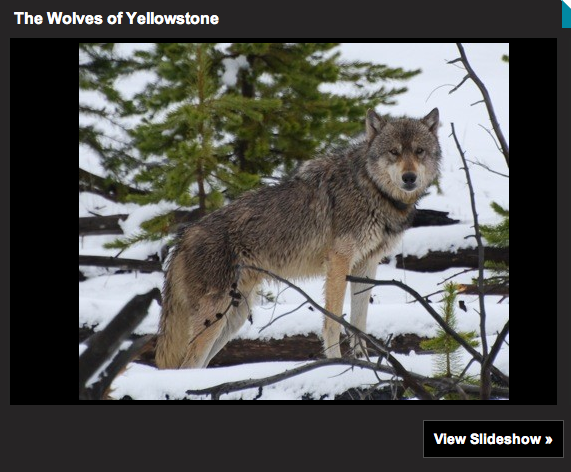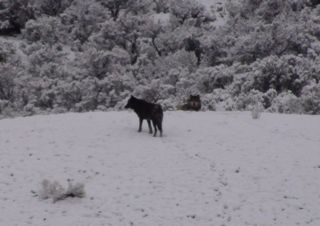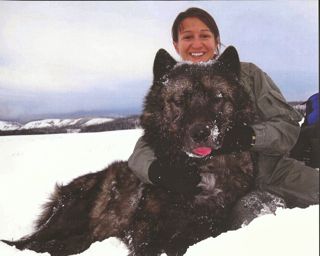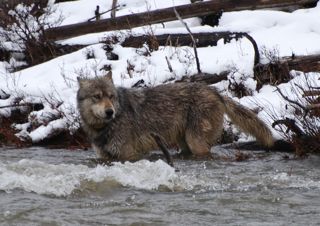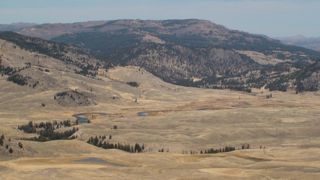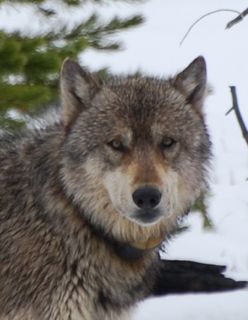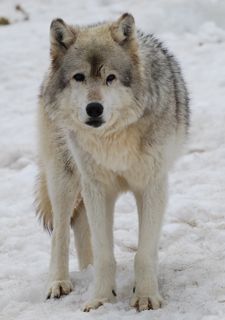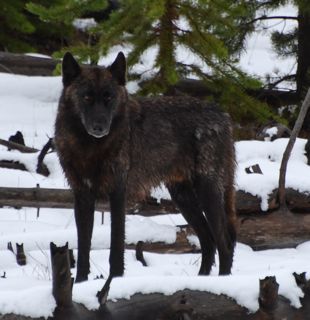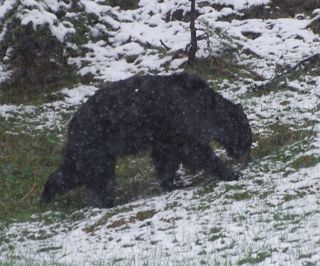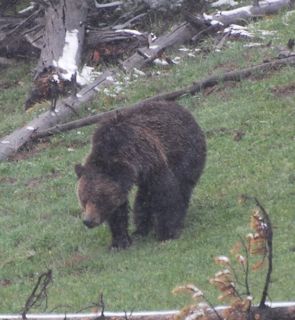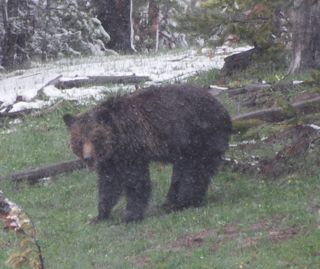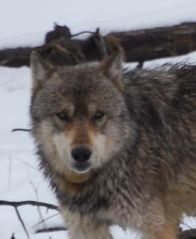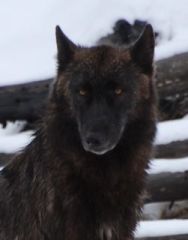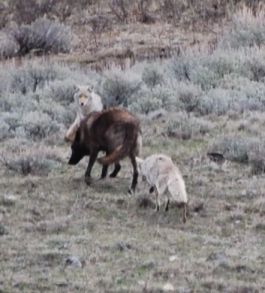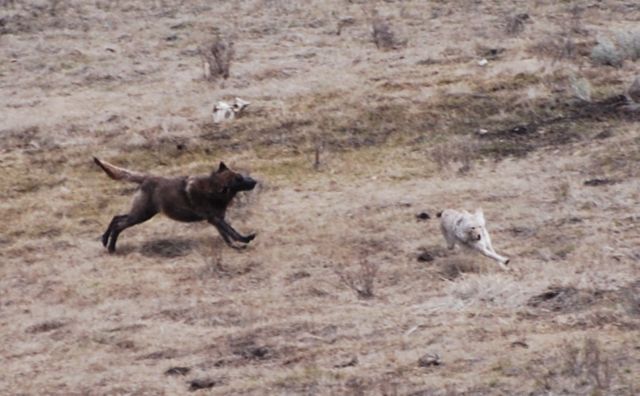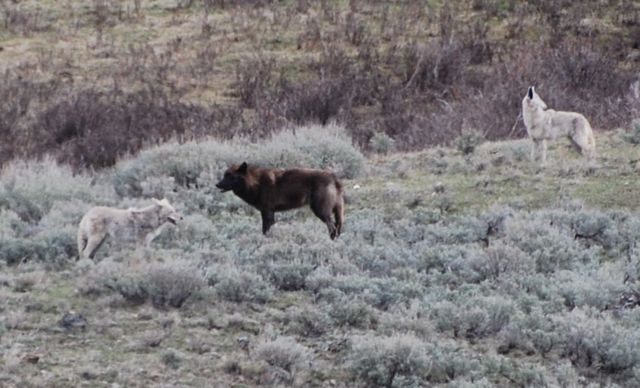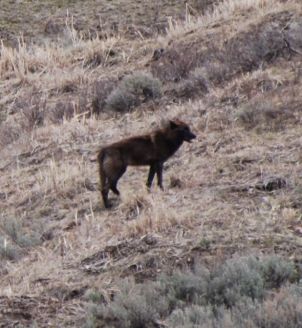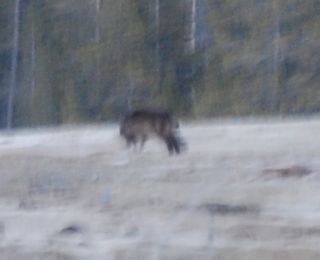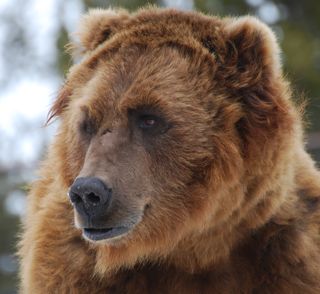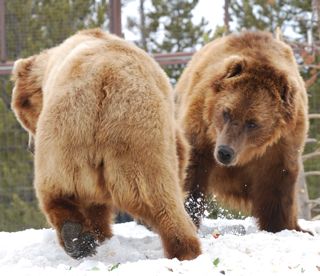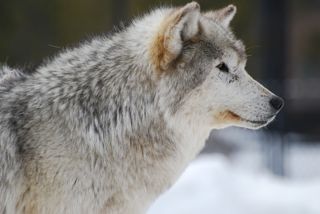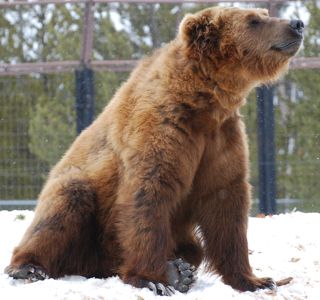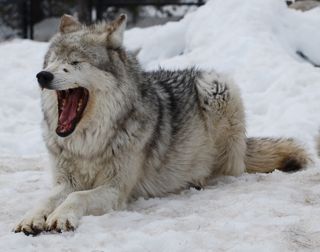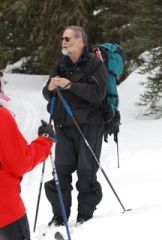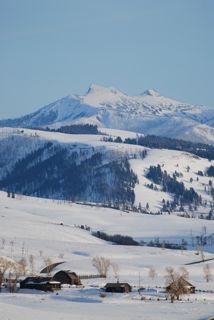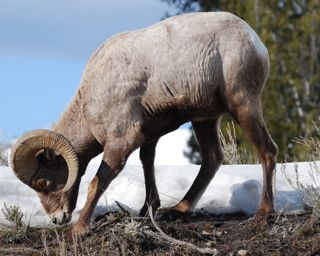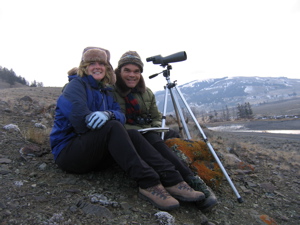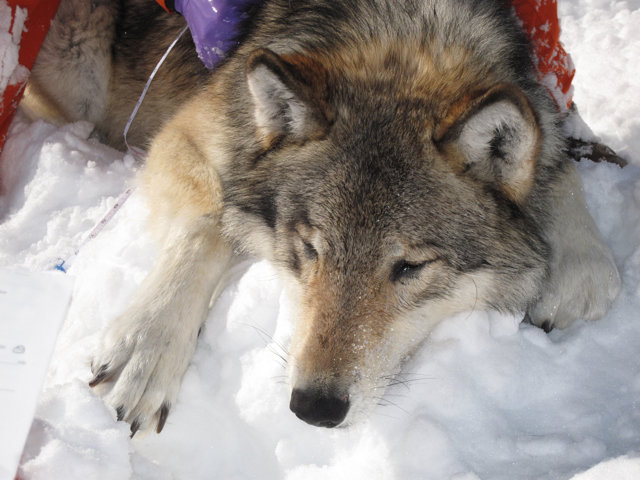 Yellowstone wolf 778M being captured during this year's research Photo: Yellowstone Wolf Project For over thirty years, Douglas Smith has been studying wolves, and has worked on the wolf restoration project in Yellowstone since it’s inception. But this year during his annual winter research, he was taken aback by the sight of a remarkable wolf his team captured for study, 760M, now the largest wolf ever recorded in Yellowstone.
Yellowstone wolf 778M being captured during this year's research Photo: Yellowstone Wolf Project For over thirty years, Douglas Smith has been studying wolves, and has worked on the wolf restoration project in Yellowstone since it’s inception. But this year during his annual winter research, he was taken aback by the sight of a remarkable wolf his team captured for study, 760M, now the largest wolf ever recorded in Yellowstone.
“I’ve handled hundreds of wolves, so I have sort of gotten hardened to the process. He was something—not just another wolf. As a scientist you always take the viewpoint that you can find answers. And for the first time I thought that this is a wolf who truly has secrets.”
Smith points out that 760M lives in the most remote area of the Yellowstone and of the lower 48 states. “I just started thinking in my head as I looked at him that this is the kind of wolf that remoteness produces.” At 147 pounds, 760M replaces the previous record holder for the largest wolf in Yellowstone, 495M, who weighed in at 143 pounds. But as Smith observes, 495 is still a pretty remarkable wolf. “495M is a pro. He’s doing great. We think he’ll turn 7/8 in April, so he’s past his prime, but he’s still hunting bison. And that is what is interesting about wolves, there is no such thing as a generic wolf.”
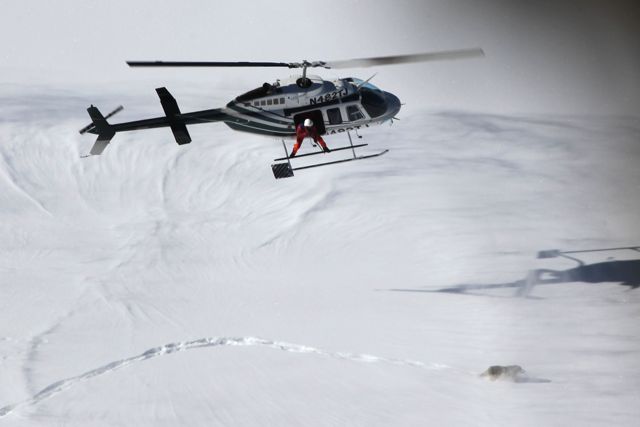 Doug Smith darting wolf 780M during winter research this year in Yellowstone Photo: Yellowstone Wolf ProjectHis research this year also showed that after two consecutive years of declines, the wolf population has largely stabilized in Yellowstone. The northern range wolves suffered the most declines in prior years, but the decreases have leveled off according to the most recent counts. And with this stabilization, Smith believes the ecosystem as a whole is becoming more balanced.
Doug Smith darting wolf 780M during winter research this year in Yellowstone Photo: Yellowstone Wolf ProjectHis research this year also showed that after two consecutive years of declines, the wolf population has largely stabilized in Yellowstone. The northern range wolves suffered the most declines in prior years, but the decreases have leveled off according to the most recent counts. And with this stabilization, Smith believes the ecosystem as a whole is becoming more balanced.
“When wolves weren’t in Yellowstone the system was out of whack because there were tons of elk and tons of coyotes and other things suffered as a result. Now there’s greater balance among both plant and animal species. I imagine this is more what Yellowstone was like before it got changed because of European humans.”
Smith also commented about the blame wolves receive for reducing elk populations. “It’s incredibly painful dealing with people who don’t like wolves and say they have devastated the elk herd. And it’s difficult to talk to people who just want Yellowstone to be an elk farm. Yes, with carnivores you have fewer animals to hunt. But this is the way it was in Yellowstone before we interfered. When we start killing predators because we want more animals to hunt, it becomes agriculture. Is that what we want the forests and the landscapes of the west to be, a big farming operation? I don’t want the world to be so highly manipulated that we have no place where wild nature can just be.”
The full interview with Douglas Smith will be published in National Parks Traveler on April 7.

